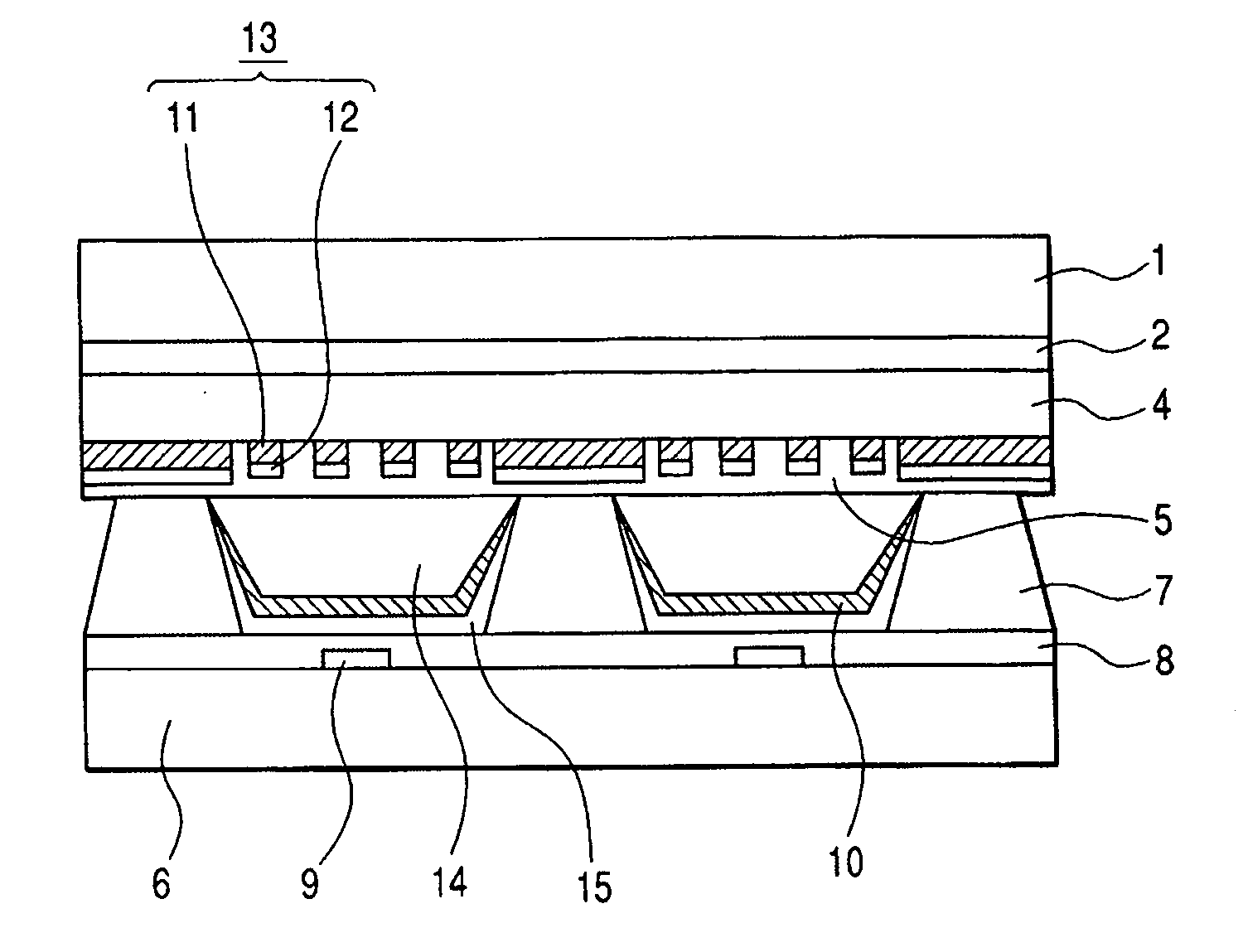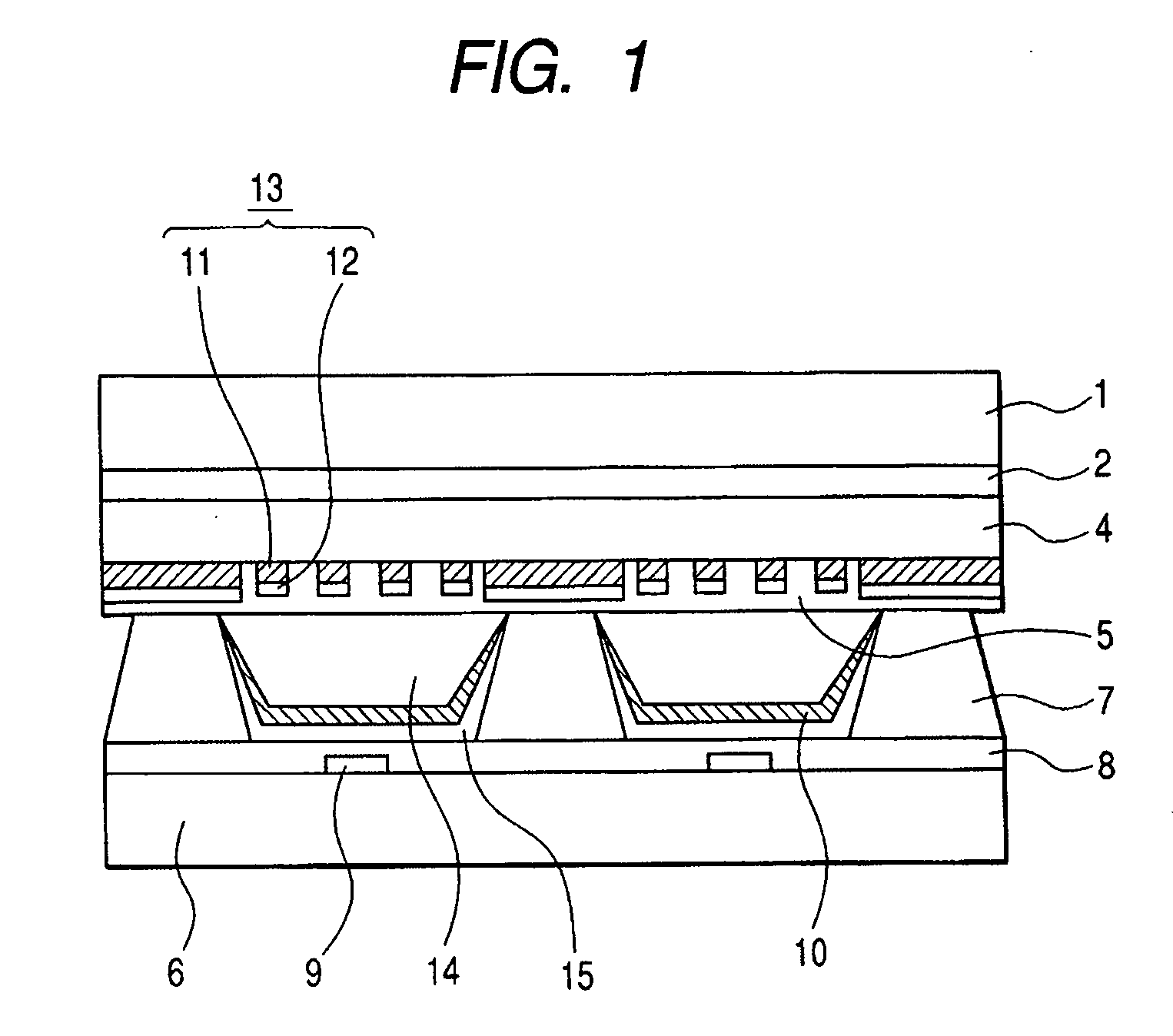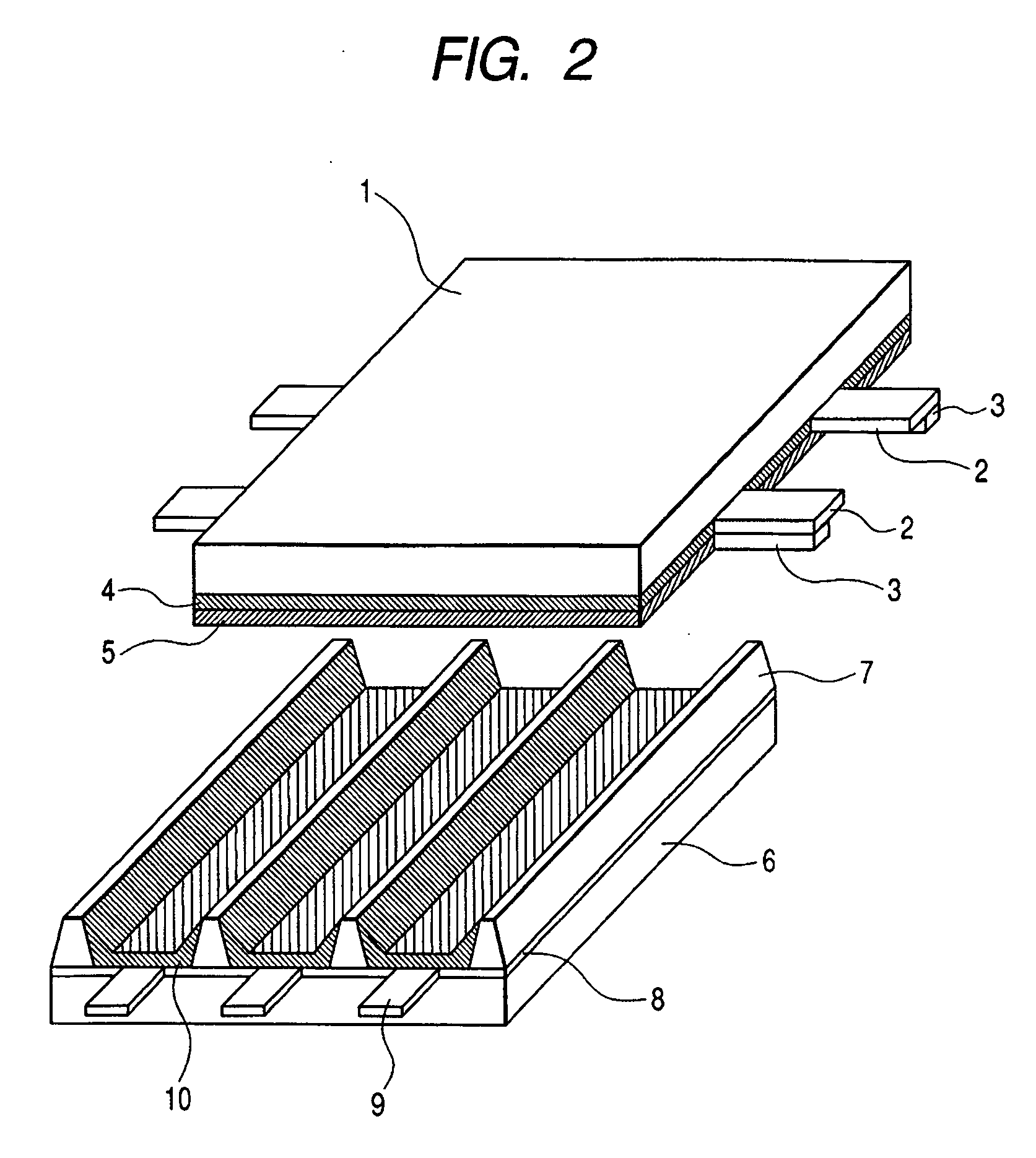Plasma display panel and image display system using same
a display panel and display panel technology, applied in the direction of electrodes, identification means, instruments, etc., can solve the problems of reducing the contrast ratio of light-room display and difficult fabrication of high-barrier ribs, and achieve the effect of suppressing the degradation of display luminan
- Summary
- Abstract
- Description
- Claims
- Application Information
AI Technical Summary
Benefits of technology
Problems solved by technology
Method used
Image
Examples
example 1
[0109]FIG. 14 is a front view of a structure of a plasma display panel in accordance with Example 1, FIG. 15 is a cross-sectional view of the structure of FIG. 14 taken along line Y-Y1 of FIG. 14, and FIG. 16 is a cross-sectional view of the structure of FIG. 14 taken along line X-X1 of FIG. 14.
[0110] After electrodes 2 and 3 were fabricated on the front substrate, the laminated members 13 comprised of the light absorption layer 11 and the light reflection layer 12 were fabricated. The light absorption layers 11 were made of chromium oxide.
[0111] Initially, a paste composed of chromium oxide particles, low-melting glass powders, a binder and a solvent is prepared for the light absorption layers 11. The paste is coated on the substrate by using a screen printing method, and then the solvent was volatilized by drying the paste. Next, the light reflection layers 12 made of titanium oxide were fabricated. Initially, a paste composed of titanium oxide particles, low-melting glass powde...
example 2
[0114]FIG. 18 is a front view of a structure of a plasma display panel in accordance with Example 2, FIG. 20 is a cross-sectional view of the structure of FIG. 18 taken along line X-X′ of FIG. 18, and FIG. 19 is a cross-sectional view of the structure of FIG. 18 taken along line Y-Y1 of FIG. 18. The plasma display panels of Example 2 were fabricated in the same way as Example 1, except that the laminated members 13 comprised of the light absorption layer 11 and the light reflection layer 12 are disposed on the surface of the layer of the dielectric 4, and their display luminance was measured.
[0115] The plasma display panels of Example 2 have exhibited improvement in luminance over the above-described comparative examples with their aperture ratios being in a range of from 0.1 to 0.8, and an improvement in luminance was realized by dispersing the laminated members 13 comprised of the light absorption layer 11 and the light reflection layer 12 within each of the discharge cells.
example 3
[0116] This example is similar to Example 1, except that the laminated members 13 comprised of the light absorption layer 11 and the light reflection layer 12 were integrally fabricated to form a unitary structure perforated with plural openings as illustrated in FIG. 8(b). The display luminance of the fabricated plasma display panels of Example 3 was measured.
[0117] The plasma display panels of Example 3 have exhibited improvement in luminance over the above-described comparative examples with their aperture ratios being in a range of from 0.1 to 0.8, and an improvement in luminance was realized by dispersing the laminated members 13 comprised of the light absorption layer 11 and the light reflection layer 12 within each of the discharge cells.
PUM
 Login to View More
Login to View More Abstract
Description
Claims
Application Information
 Login to View More
Login to View More - R&D
- Intellectual Property
- Life Sciences
- Materials
- Tech Scout
- Unparalleled Data Quality
- Higher Quality Content
- 60% Fewer Hallucinations
Browse by: Latest US Patents, China's latest patents, Technical Efficacy Thesaurus, Application Domain, Technology Topic, Popular Technical Reports.
© 2025 PatSnap. All rights reserved.Legal|Privacy policy|Modern Slavery Act Transparency Statement|Sitemap|About US| Contact US: help@patsnap.com



